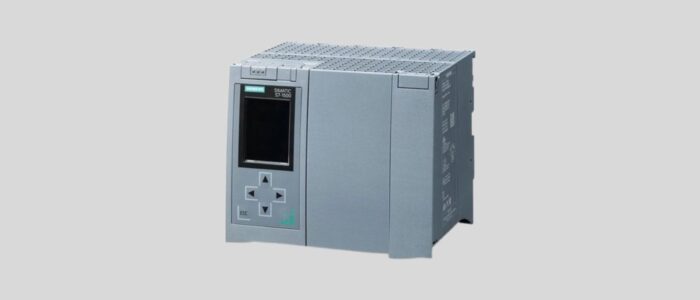Siemens Industrial Automation System – SIMATIC PLCs: Revolutionizing Automation
Introduction
Siemens is a leader in the rapidly changing field of industrial automation because to its cutting-edge SIMATIC PLCs (Programmable Logic Controllers). We at Rudra Power & Automation are aware of how important automation is to raising production, safety, and efficiency across a range of sectors. This article explores Siemens SIMATIC PLCs’ features, benefits, and uses, emphasizing their importance in contemporary manufacturing processes.
What are SIMATIC PLCs?
Siemens SIMATIC PLCs are reliable automation systems made to manage machinery and industrial operations. They are essential to manufacturing plant architecture because they enable the smooth integration of different parts including actuators, sensors, and human-machine interfaces (HMIs). The SIMATIC line includes a number of types, each designed to satisfy the unique requirements of various applications, ranging from straightforward control jobs to intricate procedures.
Key Features of Siemens SIMATIC PLCs
Scalability:
Because SIMATIC PLCs come in a variety of sizes and configurations, they can be used in both big, complicated systems and small-scale applications. Businesses may grow their automation solutions as needed because to this scalability.
Flexibility:
Engineers can select the most suitable programming language for their application with these PLCs’ support for numerous languages, such as Structured Text, Function Block Diagram (FBD), and Ladder Logic. The systems’ adaptability and ease of use are improved by this flexibility.
High Performance:
SIMATIC PLCs are perfect for applications needing quick reaction times because of their sophisticated processing capabilities, which enable them to manage high-speed processes. Real-time control and effective data processing are guaranteed by their potent CPUs.
Reliability:
Siemens PLCs are made to withstand harsh industrial conditions. Their high levels of fault tolerance and redundancy guarantee low downtime and continuous operation, which is essential for preserving production efficiency.
Integrated Communication:
Several communication protocols, such as PROFINET, PROFIBUS, and EtherNet/IP, are supported by SIMATIC PLCs. By enabling smooth communication between systems and devices, this integration raises system efficiency as a whole.
Comprehensive Software Solutions:
Siemens offers a variety of software tools for configuration, programming, and diagnostics, including TIA Portal. These technologies enhance troubleshooting skills and streamline the development process.
Advantages of Using SIMATIC PLCs
- Enhanced Productivity: SIMATIC PLCs reduce human error and speed up operations by automating processes, which raises production levels.
- Cost Efficiency: The long-term benefits from lower labor costs, lower operating expenses, and better resource management make SIMATIC PLCs a cost-effective solution, even though the initial investment in automation may be substantial.
- Improved Safety: PLCs improve workplace safety by precisely managing machinery and procedures. They can be configured to incorporate emergency shutdowns and safety interlocks, safeguarding both people and property.
- Real-Time Monitoring: Businesses can make well-informed decisions more rapidly thanks to SIMATIC PLCs’ real-time data collecting and monitoring capabilities, which also optimize production processes and cut waste.
- Seamless Integration with IoT: Siemens PLCs provide interoperability with Internet of Things (IoT) solutions, enabling data analytics, predictive maintenance, and remote monitoring and control as industries embrace IoT.
Applications of SIMATIC PLCs
Siemens SIMATIC PLCs are used in many different industries, demonstrating their adaptability and versatility. Here are a few important uses:
Manufacturing:
SIMATIC PLCs manage robotics, machinery, and assembly lines in the manufacturing industry. They guarantee accurate operation and process synchronization, which results in productive production cycles.
Process Automation:
SIMATIC PLCs are essential for process automation in industries including food and beverage, oil & gas, and chemicals. By controlling intricate processes like mixing, heating, and packing, these systems guarantee a constant level of product quality.
Water Treatment:
In water treatment plants, SIMATIC PLCs are essential for managing pumps, valves, and monitoring systems. They guarantee regulatory compliance and aid in maintaining ideal water quality.
Building Automation:
SIMATIC PLCs are employed in the energy sector to monitor and regulate power distribution, guaranteeing dependable and effective energy management in facilities and grids.
SIMATIC PLCs
Siemens SIMATIC PLCs, which provide unmatched performance, flexibility, and dependability, are at the forefront of industrial automation. They are the perfect option for companies trying to increase efficiency and production because of their wide range of features and uses. In order to assist our clients remain competitive in the fast-paced industrial world of today, we at Rudra Power & Automation are dedicated to offering them the newest automation technology, such as Siemens SIMATIC PLCs.
Businesses may cut expenses, simplify operations, and guarantee a safer workplace by investing in Siemens PLCs. Adopting automation technologies like SIMATIC PLCs will be essential for success as industries continue to change. Get in touch with us right now to learn more about how Siemens industrial automation systems can revolutionize your business.





